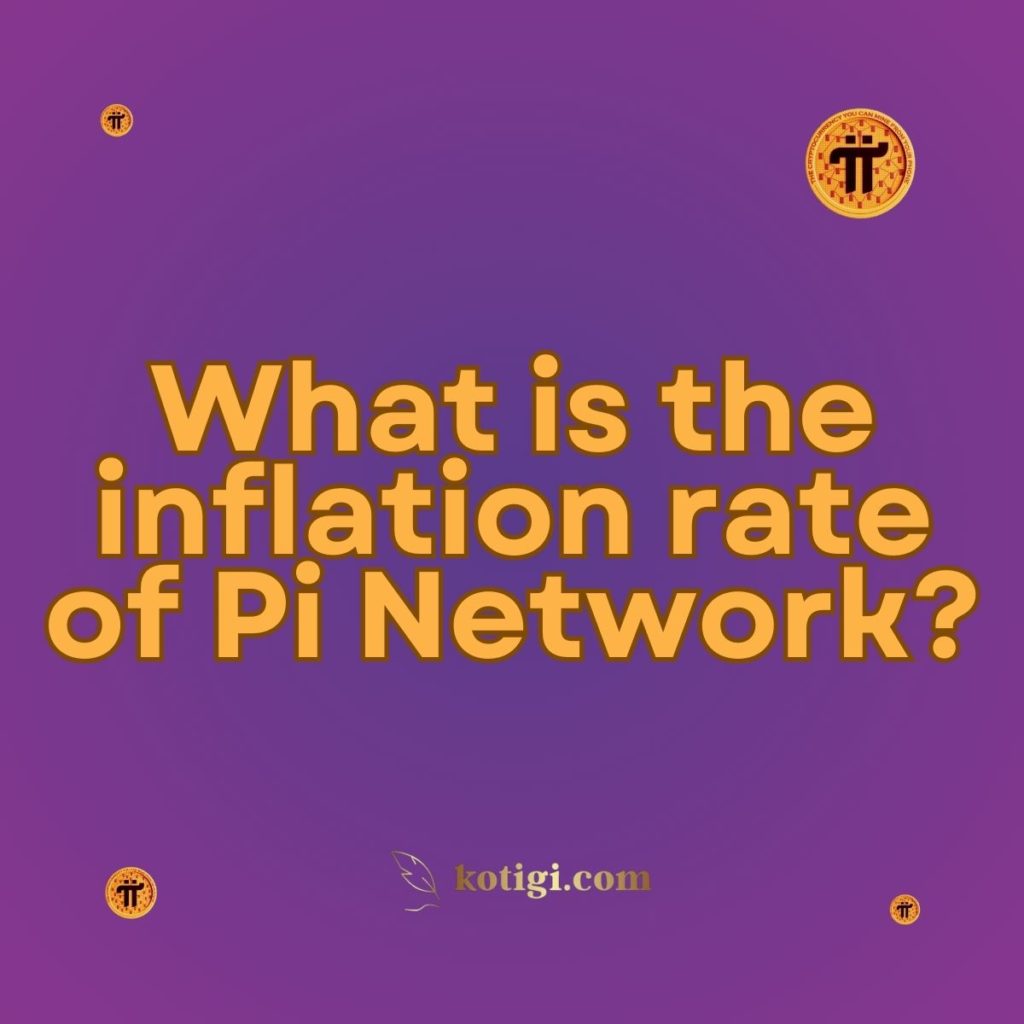
What is the inflation rate of Pi Network?
The inflation rate of Pi Network refers to the rate at which new Pi coins are generated and added to the total supply over time. Understanding this inflation rate is crucial for users and potential investors, as it impacts the value and scarcity of the currency. With a controlled and capped supply, Pi Network aims to create a sustainable economic model while fostering community engagement and participation.
Introduction
Since its launch in 2019, the Pi Network has drawn attention for its unique approach to cryptocurrency mining, enabling users to earn Pi coins through a mobile app. As with any cryptocurrency, understanding the inflation rate is critical for assessing the long-term viability and value of the currency. The inflation rate determines how quickly new coins enter circulation, impacting supply, demand, and ultimately the token’s value. This article will explore the inflation rate of Pi Network, detailing how it is calculated, its implications for users, and how it aligns with the overall economic model of the Pi Network.
Understanding Inflation in Cryptocurrency
Inflation in cryptocurrency refers to the rate at which new coins are generated and added to the total supply. This rate can significantly impact the value of the currency, influencing factors such as purchasing power, scarcity, and overall market perception. A controlled inflation rate can help maintain the currency’s value over time, whereas unchecked inflation can lead to depreciation and loss of user confidence.
Key Components of Pi Network’s Inflation Rate
The inflation rate of Pi Network is influenced by several key components, each contributing to the overall economic model of the currency.
1. Controlled Supply
One of the defining features of Pi Network’s tokenomics is its controlled supply. The total number of Pi coins is capped, meaning there is a maximum limit on how many coins will ever exist. This limited supply is designed to create scarcity, which can contribute to maintaining the value of Pi tokens over time. By controlling the inflation rate, the Pi Network aims to prevent the depreciation of its currency, ensuring that users see their coins retain value.
2. Gradual Coin Distribution
Pi coins are distributed gradually, with a structured plan detailing how and when new coins will be released into circulation. This gradual distribution approach helps manage the inflation rate, preventing sudden spikes in supply that could devalue the currency. The development team has established specific milestones and stages for distribution, ensuring that new coins enter circulation at a controlled pace.
3. Mining Mechanism
The inflation rate of Pi Network is also determined by its mining mechanism. Users mine Pi coins daily through the mobile app, earning rewards based on their participation. The mining rewards decrease over time as the network matures, contributing to the controlled inflation rate. As the number of users increases and mining continues, the number of coins entering circulation will gradually decline, further managing inflation.
Implications of the Inflation Rate
Understanding the inflation rate of Pi Network has several implications for users and potential investors, influencing their decisions regarding participation and investment in the ecosystem.
1. Value Preservation
A controlled inflation rate aims to preserve the value of Pi tokens over time. By capping the total supply and gradually releasing new coins, the Pi Network can mitigate the risks associated with inflation. Users can feel more confident in the currency’s potential to retain value, making it an attractive option for those looking to invest in cryptocurrency.
2. User Incentives
The inflation rate directly impacts user incentives within the Pi Network. With a gradual release of coins, users are motivated to continue mining and engaging with the network. As the network evolves, the diminishing mining rewards may encourage users to utilize their coins more actively, whether for transactions or investments, further stimulating economic activity within the ecosystem.
3. Community Growth
The inflation rate is closely tied to community growth and engagement. As more users join the network and mine Pi coins, the gradual distribution of tokens ensures that the community continues to expand. A healthy inflation rate can attract new participants, as potential users see the opportunity to earn and engage in a growing ecosystem.
Conclusion
The inflation rate of Pi Network plays a crucial role in its overall economic model, characterized by a controlled supply, gradual coin distribution, and a unique mining mechanism. By focusing on preserving value and fostering community engagement, the Pi Network aims to create a sustainable environment where users can thrive. Understanding the inflation rate is essential for users and potential investors, as it directly impacts the currency’s value, incentives, and overall market perception. As the network continues to evolve, the inflation rate will remain a key factor in its long-term success and sustainability.
Key Takeaways
- The inflation rate of Pi Network refers to the rate at which new Pi coins are generated and added to the total supply over time.
- Pi Network features a controlled supply, with a maximum limit on the total number of coins that will ever exist, aimed at creating scarcity.
- New Pi coins are distributed gradually through a structured plan, helping to manage the inflation rate and preserve the currency’s value.
- The mining mechanism allows users to earn Pi coins daily, with diminishing rewards over time contributing to a controlled inflation rate.
- Understanding the inflation rate is essential for users and investors, influencing their decisions regarding participation and investment in the Pi Network.
